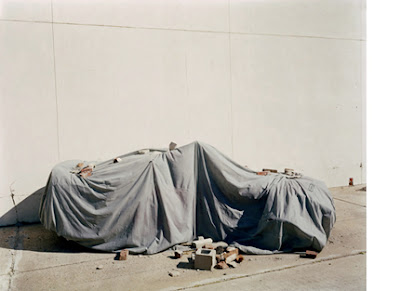 Barney Kulok’s Dystopic Dreams:
Barney Kulok’s Dystopic Dreams:
Some people meditate to connect with their muses. Others find an
unsuspecting ingénue, cast off from a Seven Sisters college. However,
photographer Barney Kulok
is a much simpler man. "I smoke cigarettes and listen to Jimi Henrix
really loud and drive fast." When looking at one of Kulok's pieces, the
visceral reflection of his creative process is apparent in his finished
piece. "I'm usually trying to answer some formal or conceptual
question." Kulok's kinetic snapshots find inspiration in all sots of
characters. "My brother Sam," Kulok says, "an incredible jazz guitarist
and probably the best artist I know, so he inspires me in all sorts of
ways -- visual and otherwise." But Kulok is in the enviable position of
knowing his idols personally -- artists such as Sebastian Bear-McClard
("He's just an old friend from school -- far from my idol," Kulok
cheekily corrects me) and Vik Muniz among others. "They've always challenged me to push harder." lire la suiteDéclic Kulock article en français d'Anaïd Demir ici
le site de Barney Kulok
Illustrations: Simple fact (extracts) 1_Untitled (stain) /// 2_Untitled (covered) /// 3_Untitled (of and)














































